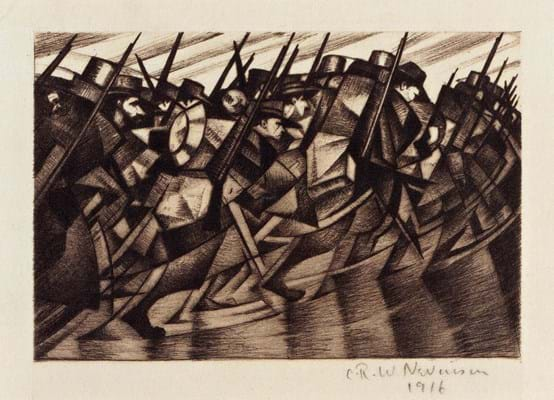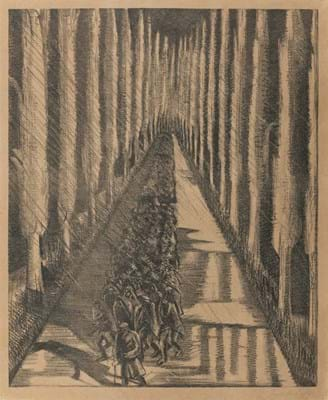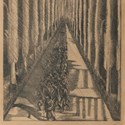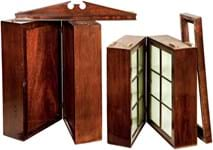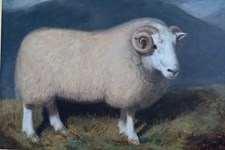Nash and Nevinson: Impressions of War and Peace features major prints by both artists, who were exact contemporaries. Born in 1889, they also died in the same year, 1946.
Though each developed different interests while studying at the Slade School, both were changed by their wartime experiences and are now best remembered for their reflections on the conflict.
Prolific Nevinson
While training, Nevinson was drawn to depictions of modern city life and Futurism.
The more prolific printmaker of the two artists, he produced around 150 prints from 1916-33, many reflecting the instruments of the first mechanised war.
His drypoint Returning to the Trenches (1916) uses Futurist techniques for depicting movement to convey the dense lines of French troops, showing the soldiers as parts in a larger machine.
Nash, on the other hand, was fascinated by the natural world. After his wartime experience, his landscapes grew threatening. Among his most recognisable works are fields of broken trees blasted by combat.
In 1918 he produced seven war lithographs, one of the rarest of which is Men Marching at Night. As in Nevinson’s Returning to the Trenches, the men unite to form a single mass. Though flanked by poplar trees, the scene is geometric and unnatural.
Osborne Samuel commemorated the centenary of the First World War in 2014 with a large exhibition of Nevinson prints.
This current selection also features depictions of the post-war world. All works are available to be viewed online along with the catalogue.


